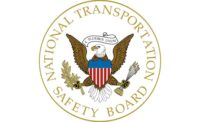 Florjan Nilaj and Gazmend Vukaj left their Michigan homes and traveled 260 miles south to Oxford, Ohio for a commercial painting job, never thinking that Oct. 24, 2014, might be the last day of their lives.
Florjan Nilaj and Gazmend Vukaj left their Michigan homes and traveled 260 miles south to Oxford, Ohio for a commercial painting job, never thinking that Oct. 24, 2014, might be the last day of their lives.
How it happened
The 25-year-old Nilaj and 40-year-old Vukaj were seven stories above ground on an electric two-point scaffold. They were painting a 123-foot-tall water tower when the scaffold's hoist failed, and a nylon suspension rope broke. As the scaffold collapsed, the two men fell to their deaths.
An investigation of the tragedy found that if their employer, V & T Painting LLC, had provided the painters with required equipment to stop their falls, they might have survived. OSHA inspectors identified 17 serious safety violations at the Oxford site. An additional 13 serious violations were found at a second site in Hamilton, where the company was also contracted by the Southwest Ohio Regional Water District to paint water towers.
A "disturbing trend"
"Two families are devastated by this preventable tragedy. No one should have to suffer such a painful loss. Making sure protective equipment is in use and working properly is a common-sense way to save lives and prevent injuries," said Ken Montgomery, OSHA's area director in Cincinnati. "Companies that put their workers dangerously high above the ground must provide protection to stop their falls. We are seeing a disturbing trend in deaths and injuries among workers on communications and other types of towers that could have been prevented."
Design, installation, inspection, training failures
OSHA inspectors also found that the scaffolds used by V & T Painting were not designed by a competent person; U-bolts were not installed correctly; and damaged wire ropes, slings, electrical cords and other faulty equipment were in use. The company also did not inspect rigging equipment and scaffolds before use or do site inspections, and it did not train workers about fall protection equipment and standards. Inspectors also discovered that vertical lifelines, support lines and suspension points were attached to the same anchor point, and the company failed to protect lines from sharp edges and abrasion.
OSHA has proposed penalties of $199,000 for the company, based in Farmington Hills, Michigan.
National Safety Stand-Down starts today
To educate construction workers and employers about how to recognize fall hazards and reduce their risks, OSHA and its partners encourage all employees and employers who face workplace fall hazards to participate in this year's National Safety Stand-Down from May 4-15.
The newly launched National Safety Stand-Down website for 2015 provides details on how to:
- Conduct a Stand-Down event for your company.
- Obtain a certificate of participation.
- Access free education and training resources, fact sheets and outreach materials in English and Spanish. Find free Stand-Down events open to the public.
The National Safety Stand-Down initiative was launched three years ago with the National Institute for Occupational Safety and Health, NIOSH's National Occupational Research Agenda and The Center for Construction Research and Training. Additional partners for this year's event include the American Society for Safety Engineers; National Safety Council; National Construction Safety Executives; the U.S. Air Force; OSHA-approved state plans; state consultation programs; and OSHA Training Institute Education Centers.



